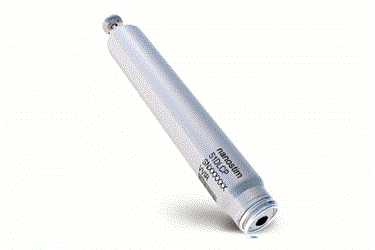Miniaturized, Leadless Pacemakers Achieve New Milestone: First U.S. Implants
By Joel Lindsey

February has been an important month for pacemaker development, with St. Jude Medical and Medtronic each announcing landmarks in their respective efforts to develop tiny, leadless pacemakers.
Last week, Medtronic announced the first U.S. implant of its Micra Transcatheter Pacing System (Micra TPS), billed by the company as “the world’s smallest pacemaker,” at the NYU Langone Medical Center in New York City. The implant was part of the company’s global clinical trial, which is slated to enroll up to 780 patients at approximately 50 medical centers. (The first human implant of the device took place in Austria last December.)
“With its small size and minimally invasive procedure, this technology represents the future of pacing,” said Dr. Larry Chinitz, director of the Heart Rhythm Center at NYU Langone Medical Center, and the surgeon who implanted the first Micra TPS device. “Eliminating the need for a lead and pocket has the potential to reduce complications and recovery times compared to traditional pacemaker implants, which would be a major benefit to patients.”
Earlier in the month, St. Jude Medical announced that its Nanostim pacemaker had been successfully implanted for the first time in the U.S., at The Mount Sinai Hospital in New York City. This initial implant marked the beginning of the company’s LEADLESS II clinical trial of the new pacemaker, which will be tested on roughly 670 patients throughout the U.S., Canada, and Europe.
“Since the introduction of the first implantable pacemaker in 1958, pacemaker technology has continued to evolve into smaller, more efficient devices,” said Dr. Mark D. Carlson, chief medical officer and VP of global clinical affairs for St. Jude Medical. “Despite this evolution, pacing technology has, until now, required surgery in addition to leads that connect the pacemaker to the heart.
“The Nanostim leadless pacemaker is the first miniaturized device that removes the need for leads, thus offering less invasive and less complicated procedures for physicians and patients around the world.”
Nanostim and Micra TPS share two key innovations: they are small enough to be implanted directly into the heart via catheter, and they both operate without leads.
These innovations carry several significant advantages over earlier pacemaker technologies.
The small size of the new pacemakers — Micra, the smaller of the two, is one-tenth the size of conventional pacemakers and about the same size as a large vitamin — allows them to be implanted, repositioned, and removed non-surgically through catheters inserted into the femoral vein.
Additionally, both companies say that the absence of leads should reduce the occurrence of electrical malfunctions once a device has been implanted.
“We believe the innovative nature of this technology will change the future landscape of cardiac rhythm management devices by revolutionizing the delivery methods and design of these life-saving technologies,” Carlson said.
Image provided courtesy of St. Jude Medical, Inc.
